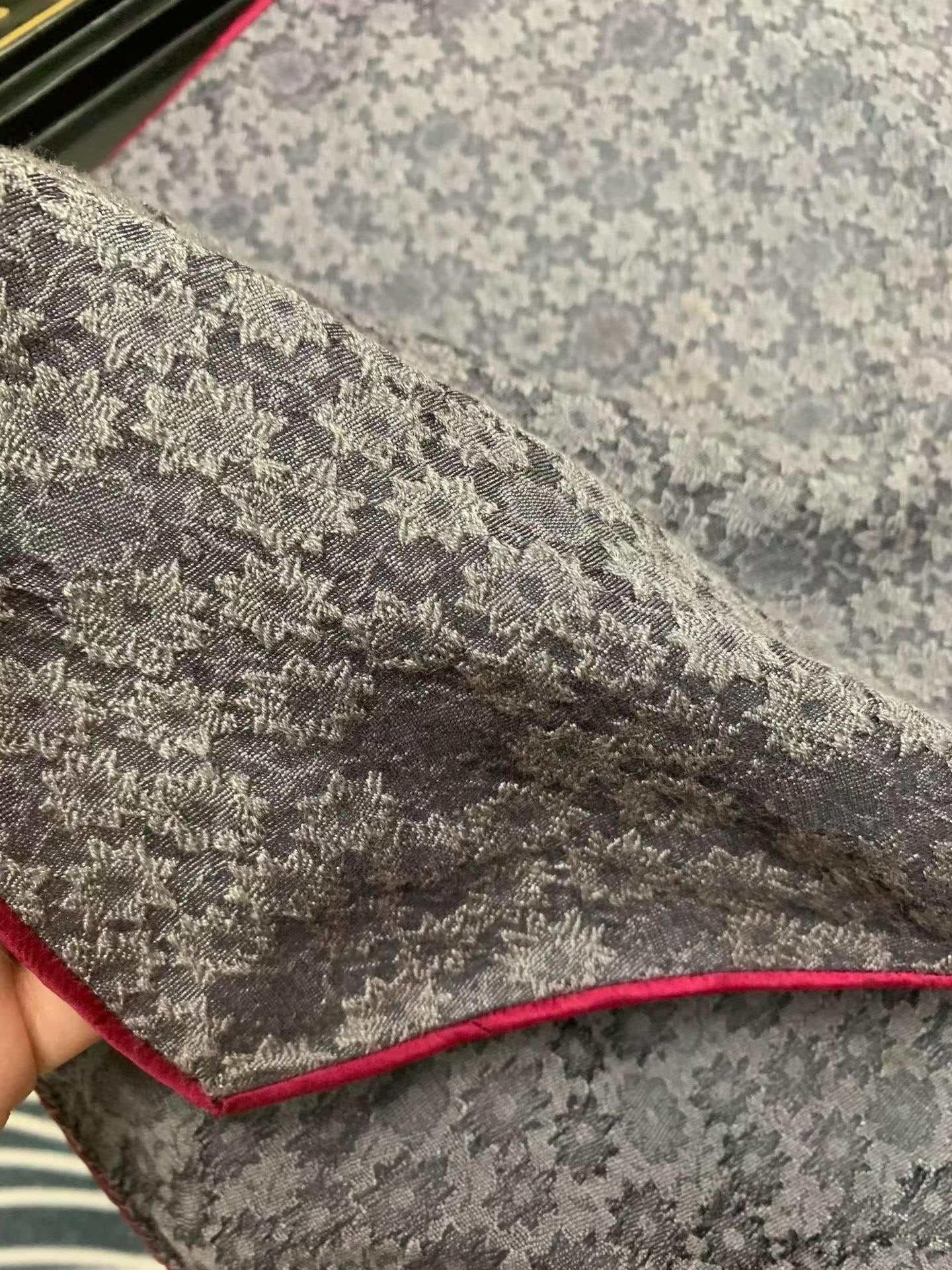深圳溯源
50年代 - 「冰裂瓷韵」:上世纪五十年代提花丝绸线香绲花瓶底古董大陆旗袍 / 1950s - "Porcelain Crackle": A 1950s Mainland China Vintage Qipao with Jacquard Silk, Incense-Thread Piping, and Vase Silhouette
50年代 - 「冰裂瓷韵」:上世纪五十年代提花丝绸线香绲花瓶底古董大陆旗袍 / 1950s - "Porcelain Crackle": A 1950s Mainland China Vintage Qipao with Jacquard Silk, Incense-Thread Piping, and Vase Silhouette
Couldn't load pickup availability
分享一件上世纪五十年代大陆产提花绸线香绲三角腰花瓶底古董旗袍
浅灰底提花绸面,经纬线间织就冰裂纹般连续几何纹样,
剪裁取“三角腰花瓶式”:腰身内收如柳梢扶风,
其稀缺性有三:一曰“工艺绝”,提花织造需木机匠人半载光阴,
注:冰裂纹灵感源于宋代官窑“冰裂鳝血”之美,
"Porcelain Crackle": Brocade Weaving Elegance, Crimson Piping Reflecting the Jade Vase
We share a rare vintage Qipao from 1950s Mainland China, defined by its jacquard silk, xianxiang gun (incense-thread) piping, and a "Vase-Bottom" silhouette with a tripartite waist. This garment, where brocade weaving wraps the elegance and crimson piping reflects the jade flask, is a masterpiece of refined subtlety.
The light grey jacquard silk surface features continuous, geometric patterns woven into the warp and weft, resembling crackle-glaze on Song Dynasty porcelain (bingliewen) or plum blossom traces on winter snow. The classical text Gegu Yaolun states: "Of all the woven gold gauze and netting, those with the finest and densest texture are superior." This Qipao's fabric is entirely constructed with the jacquard technique, creating a brocade ground where the pattern subtly emerges and disappears in shifting light—like "smoke obscuring the cold water, and the moon obscuring the sand" (yan long han shui yue long sha), embodying the Eastern aesthetic of "a mountain range viewed differently from different sides."
The collar, cuffs, and hem are trimmed with a single crimson piping, uniform and as fine as a strand of hair—this is the "xianxiang gun" (incense-thread piping) technique. This ancient method involves encasing silk or gauze with fine threads, then stitching it by hand, which is time-consuming but achieves a gentle refinement, capturing the poetic sensibility of "a deceased friend's garment, its red and grey reflecting each other." Compared to modern machine-stitched piping, it possesses a delicate suppleness and historical sinew.
The tailoring adopts the "Tripartite Waist, Vase-Bottom Silhouette": the waist is cinched like a willow branch swaying in the wind, and the skirt gradually widens from below the knee, mirroring the classic Chinese "gourd vase" or danping (gallbladder vase) with its full shoulder and narrow foot. This structure is rooted in the "restrained elegance" of 1950s Mainland Chinese Qipao aesthetics—it discards the exaggerated shoulder pads of the 1940s while retaining the body's graceful curves. It recalls the woman described by writer Feng Zikai: "clothes of light elegance, a posture of natural grace," showcasing artistry within simplicity.
During this period, when the new China was being built, the Qipao transitioned from a "modern symbol" back to "daily wear." This style—jacquard silk, xianxiang gun piping, and the vase silhouette—represents a "meticulous painting" style common among the family members of literati and intellectuals during that transitional era. Few of these pieces survive, most having been secretly collected by overseas museums or veteran collectors.
Its scarcity is threefold: First, "Unrepeatable Craftsmanship": the jacquard weaving required half a year's labour from an artisan, and the xianxiang gun stitching relied on inch-by-inch manual precision, making it nearly impossible to replicate today. Second, "Historical Representation": 1950s Mainland Qipaos inherited the elegance of the Republican era while integrating a new proletariat aesthetic; this "gentle, unostentatious" style is a true requiem for the era's taste. Third, "Pristine Condition": after more than seventy years, the gown remains free of moth damage or repairs, with clear patterns, as if newly tailored. It is truly "old moonlight contained in a celestial sphere vase," illuminating half a century of history.
Note: The crackle pattern is inspired by the "ice-crackle eel-blood" glaze of Song Dynasty official kilns. The xianxiang gun technique can be traced back to the Qing Palace workshop archives' records of "sewing piping with tiny pearl beads." The vase silhouette subtly echoes the "S-shaped aesthetic" of ancient China—from the imperial consorts in the "Nymph of the Luo River" painting to the ladies in Ming and Qing portraiture, beauty was defined by "round shoulders and arms, with a tightly bound waist." This Qipao is a silent dialogue between traditional aesthetics and modern tailoring.
Share












